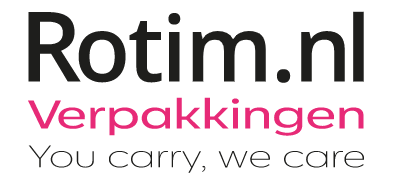New Year’s Eve is coming soon. Here in the Netherlands we eat ‘oliebollen’ and have a lot of firework, but how do people in other countries celebrate the last day of 2016? We asked some AEGEE-locals how they celebrate this day!
Germany
We start near the Netherlands, in Germany. Matthias, from AEGEE-Bamberg. They call their traditions the ‘German Sylvester traditions’.
Matthias tells us: ‘Usually Germans celebrate New Year’s Eve together with their family or their closest friends. They normally meet for dinner in the evening and then eat for a long time. Raclette and fondue is really popular to eat for this event. Then around half past 11 people meet on the street or at places you have a nice view and then at 12 the battle begins. Germans are fucking crazy with fireworks. They spend a lot of money on it and also try to enjoy it. It will take almost half an hour until everybody did his firework. Afterwards, it’s time to wish everybody “ein gutes neues Jahr” (a happy new year). After the fireworks they go to a party or just continue drinking on the street. And of course, on the next day mostly everything is cleaned up again. Thanks to the cleaning men, that are working for the city or village.’
Russia
From Germany we go to Russia. Irina, from AEGEE-Saint Petersburg, tells us about the traditions in her country. She thinks that there is not really a difference between the countries when we talk about traditions. This is what she says:
‘About tradition, I think it’s the same with you guys – decorate home, cooking, buying presents and so on.’
Spain
In Spain there is a special tradition at 12 o’clock, when the new year starts. Carolina, from AEGEE-Madrid tells about it: ‘The main tradition is just before 12. All the family watch television or go to Puerta del Sol (if you are in Madrid). If you watch television, you will watch the clock in Puerta del Sol and just 15 seconds approximate before 12, the clock starts. At the beginning just 4 bells that we call the ‘cuartos’, quarters. During the ‘cuartos’ we get ready and after them the bells. One bell one grape. And so on. We eat 12 grapes in 12 seconds. Each grape represent one month of the year. And they of course will bring you luck. After the grapes, all the family shout ‘happy new year’ and we kiss all of us and we drink cava or champagne. Do you like it? Watch this: https://www.youtube.com/watch?v=m7jqRwgPF3U :The bells ‘las campanadas’ from last year. Watch it from minute 3 approximately.’
Euskaria
In Basque, another part of Spain, they have the same tradition. Andrea from AEGEE-Bilbao, Basque: ‘Mmm I’m not Basque, but as far as I know I can tell you that they follow the typical Spanish tradition of eating the 12 grapes before the New Year starts. I think that, in this time of the year, the only thing they have different from the rest of the country is a new type of Santa Claus.’
Turkey
Berfu from AEGEE-Eskisehir in Turkey tells about her New Year’s Eve:
‘Well for the new year, we don’t have a Christmas tradition like Europe, but for the last day of the year, we generally get together with friends or with family. After having a good dinner all together, someone starts to drink and get fun, someone goes to a pub or a well-programmed nightclub to have fun and say goodbye to the old long year. But I remember that when I was a child, after having a good dinner again, we start to play a game which is called “tombala” with all family members. In this game there are lots of different cards to pick and lots of numbers in a pocket. You pick one of the cards then every player starts to pick numbers from the pocket. Who finishes first will be the winner. But as I said I was playing it when I was a child, in last years we just take care about dinners and dresses and drinks and most of the children decide to celebrate new year with their friends outside, also older people come together and have fun together. And the last thing is that families are generally having a new year’s tree and put their gifts under it. And you can open them late at night.’
France
In France, Marlene from AEGEE-Lille, says: ‘We send fireworks, we party with friends, we do the countdown and we drink champagne. We have the count down. I think we have old traditions, but they are not very popular.’

In Hungary, Reka from AEGEE-Budapest knows a funny tradition: ‘Well, that’s a great question regarding Hungarian New Year’s Eve. I don’t even know. We don’t really eat chicken, as it takes away our luck – apparently – but we eat lentil to be lucky next year. But I don’t really know anything else: most of the time I just hang around with friends, drinking champagne, dancing or playing games.’
Croatia
Diego, from Croatia, but member of AEGEE Ljubljana, tells us a lot about the Croatian traditions on New Year’s Eve.
It starts with the so-called announcing: ‘On the New Year’s Eve, on some Croatian islands, such as Vis or Korčula, the tradition of the so-called ‘announcing’ can be found. In the late afternoon, children in small groups go from door to door in their villages or cities and sing Christmas songs announcing the new year. Firstly, children knock on the door of the host and ask, if it is possible to sing something for their family. If the answer is positive, the host invites children in his/her home and offers them with candies, food and, occasionally, money. The ‘announcing’ takes place three times a year – on Christmas Eve, on the New Year’s Eve and during the ‘Three kings’.’
There are also daily rituals, which are historical traditions. Diego: ‘On the first morning of the new year, the families attempt to invite ‘luck’ in their homes through different rituals. Firstly, after standing up in the morning they would wash their faces in a pot of clean water. During the night, an apple with a coin inside would be laid into the water. It was believed that this can bring wealth and health in the new year. Secondly, the children would run around the village wishing a good and prosperous new year to their neighbors and friends. Lastly, it was believed that your health in the new year would resemble the health of the first man or woman you saw on the first day of the new year.’
In Croatia there are eating habits around New Year’s Eve. Diego says: ‘The New Year’s Eve meals were carefully prepared in order to ‘scare’ away bad spirits from the house. In some regions, chicken was not seen as an appropriate meal, since it symbolized a non-intelligent animal that can easily run away, meaning that ‘luck’ could also run away from the house in the new year. Similar, fish and rabbits were also avoided. The best solution was to prepare pork meat, since pig symbolized a strong animal that always pushes forward. In addition, lentil was often prepared together with meat, symbolizing money and wealth that people wanted to see in the new year. Lastly, all meals were followed by a dessert, usually a sweet cake.’
Finally, there is a tradition called: Don’t take out the trash! Diego explains how this tradition works.
‘One of the beliefs concerning the New Year’s Eve was that taking out the trash in the period between Christmas and the New Year’s Eve can take all ‘luck’ that was in the house out with it. Thus, the trash would stay in the house for a couple of days in this late December period.’
Azerbaijan
And last but not least, Bakhtiyar from Azerbaijan (AEGEE-Baku) tells us how there is for them no new year yet: ‘It’s not our national holiday, that is why we haven’t any special things, but in our country people trying to be at home and celebrate holidays with his family. It’s very important for us. And other things, like Russia, because we were more than 70 years in Soviet Union. That is why our new year traditions are like in Russia. Our new year starts at 20-21 of March. It is called NOVRUZ holiday, it’s an absolutely fantastic holiday.’
As you can read, there are some differences in traditions. But an important similarity is that people want to be with their family and friends and have a great time together.
Happy new year everyone!
Cover: By Eddy BERTHIER from Brussels, Belgium [CC BY 2.0 (http://creativecommons.org/licenses/by/2.0)], via Wikimedia Commons










